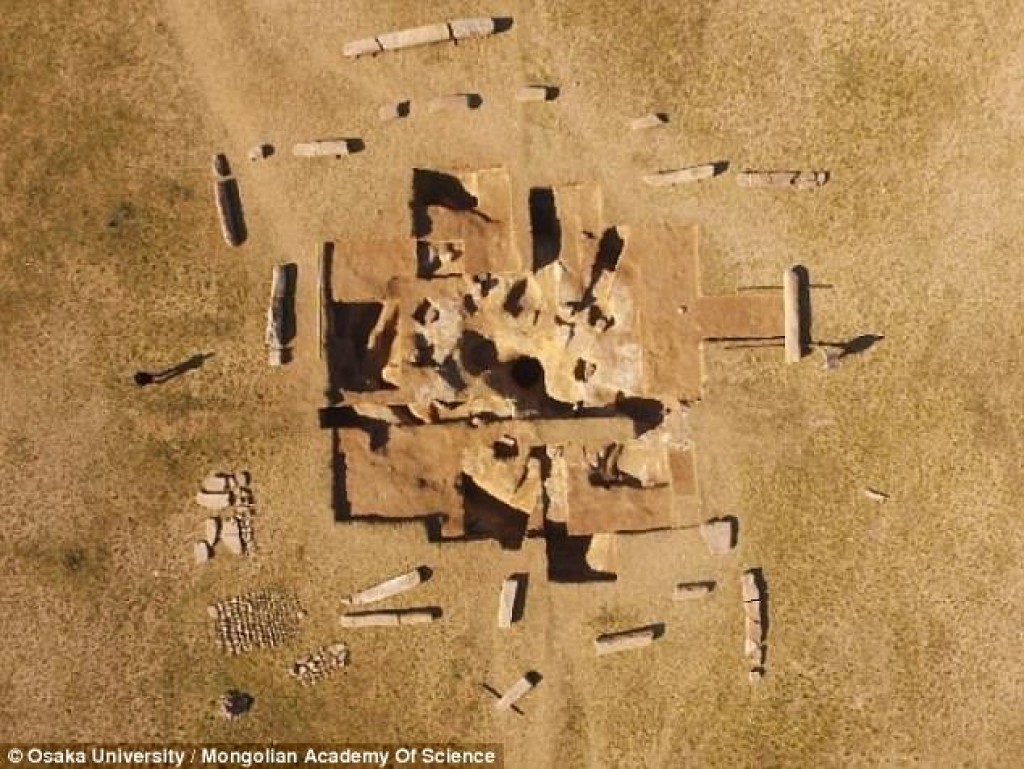1300 year-old Turkic monument with mysterious inscriptions found in Mongolia

A strangely arranged Turkic sarcophagus or stone coffin surrounded by 14 stone pillars, each of which was covered in mysterious Turkic Runic inscriptions was found in eastern Mongolia.
A strangely arranged Turkic sarcophagus or stone coffin was found in eastern Mongolia. It is surrounded by 14 stone pillars, each of which was covered in mysterious Turkic Runic inscriptions, the alphabet used by the early Turkic Khaganates empire during the 8th to 10th centuries. Moreover, experts located more than 100 tamga or signs, of the ancient Turkic tribes inscribed on the stone pillars. This is the result of a joint excavation conducted by a team from Osaka University and the Institute of History and Archaeology of the Mongolian Academy of Sciences between 2015 and 2017. The ruins have been discovered at the Dongoin Shiree steppe in eastern Mongolia. It is found out that the steppe of Dongoin was the centre of the eastern area of the ancient Turkic Khaganates. As the Turkic Khaganate established in 552 is one of the ancient empires that once ruled the area of present-day Mongolia, some Turkic monuments, statues and steles are found in the Mongolian territory. According to Professor Takashi Osawa who leads the excavation team, the grave belonged to an official assumed the position of Yabgu, viceroy, the highest ranking behind emperor who served during the reign of Bilge khagan of the Second Turkic Khaganate, in the eighth century AD, 1300 years ago. The Turkic language title khagan is equivalent to the rank of emperor. The investigation is still ongoing and the exact translations of the inscriptions have yet to be completed. Moreover, the monument is expected to help reveal that power relationship of rulers in the east area of the Turkic Khaganate and their territories as well as their political and military relationships with other Mongolian tribes in the Middle Ages. In addition, the arrangement of these stone pillars could give information for discussing the religious ideas and world outlook of the ancient nomads.
Views: 2932
Tweet